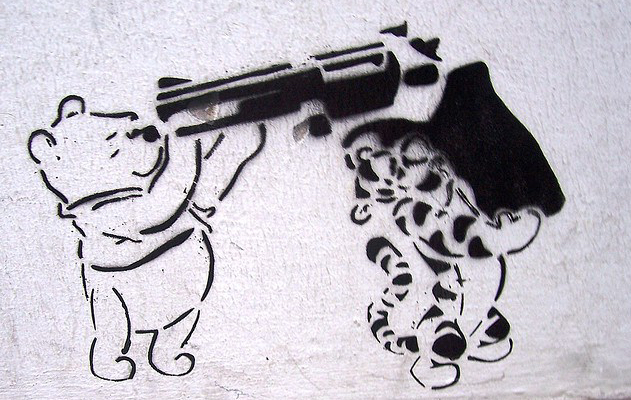I was looking for a verse by AA Milne – one of the usual ones that everyone knows from Now We Are Six – when I came across this.
I admit I know nothing about Milne outside of Christopher Robin and Pooh – Wikipedia tells us this:
Milne joined the British Army in World War I and served as an officer in the Royal Warwickshire Regiment and later, after a debilitating illness, the Royal Corps of Signals. He was commissioned into the 4th Battalion, Royal Warwickshire Regiment on 17 February 1915 as a second lieutenant (on probation). His commission was confirmed on 20 December 1915. On 7 July 1916, he was injured while serving in the Battle of the Somme and invalided back to England. Having recuperated, he was recruited into Military Intelligence to write propaganda articles for MI 7b between 1916 and 1918. He was discharged on 14 February 1919, and settled in Mallord Street, Chelsea. He relinquished his commission on 19 February 1920, retaining the rank of lieutenant.
I think the poem tells us more:
In days of peace my fellow-men
Rightly regarded me as more like
A Bishop than a Major-Gen.,
And nothing since has made me warlike;
But when this agelong struggle ends
And I have seen the Allies dish up
The goose of Hindenburg—oh, friends!
I shall out-bish the mildest Bishop.
When the War is over and the Kaiser’s out of print,
I’m going to buy some tortoises and watch the beggars sprint;
When the War is over and the sword at last we sheathe,
I’m going to keep a jelly-fish and listen to it breathe.
I never really longed for gore,
And any taste for red corpuscles
That lingered with me left before
The German troops had entered Brussels.
In early days the Colonel’s ‘Shun!’
Froze me; and, as the War grew older,
The noise of someone else’s gun
Left me considerably colder.
When the War is over and the battle has been won,
I’m going to buy a barnacle and take it for a run;
When the War is over and the German Fleet we sink,
I’m going to keep a silk-worm’s egg and listen to it think.
The Captains and the Kings depart—
It may be so, but not lieutenants;
Dawn after weary dawn I start
The never-ending round of penance;
One rock amid the welter stands
On which my gaze is fixed intently—
An after-life in quiet hands
Lived very lazily and gently.
When the War is over and we’ve done the Belgians proud,
I’m going to keep a chrysalis and read to it aloud;
When the War is over and we’ve finished up the show,
I’m going to plant a lemon-pip and listen to it grow.
Oh, I’m tired of the noise and the turmoil of battle,
And I’m even upset by the lowing of cattle,
And the clang of’ the bluebells is death to my liver,
And the roar of the dandelion gives me a shiver,
And a glacier, in movement, is much too exciting,
And I’m nervous, when standing on one, of alighting—
Give me Peace; that is all, that is all that I seek…
Say, starting on Saturday week.





